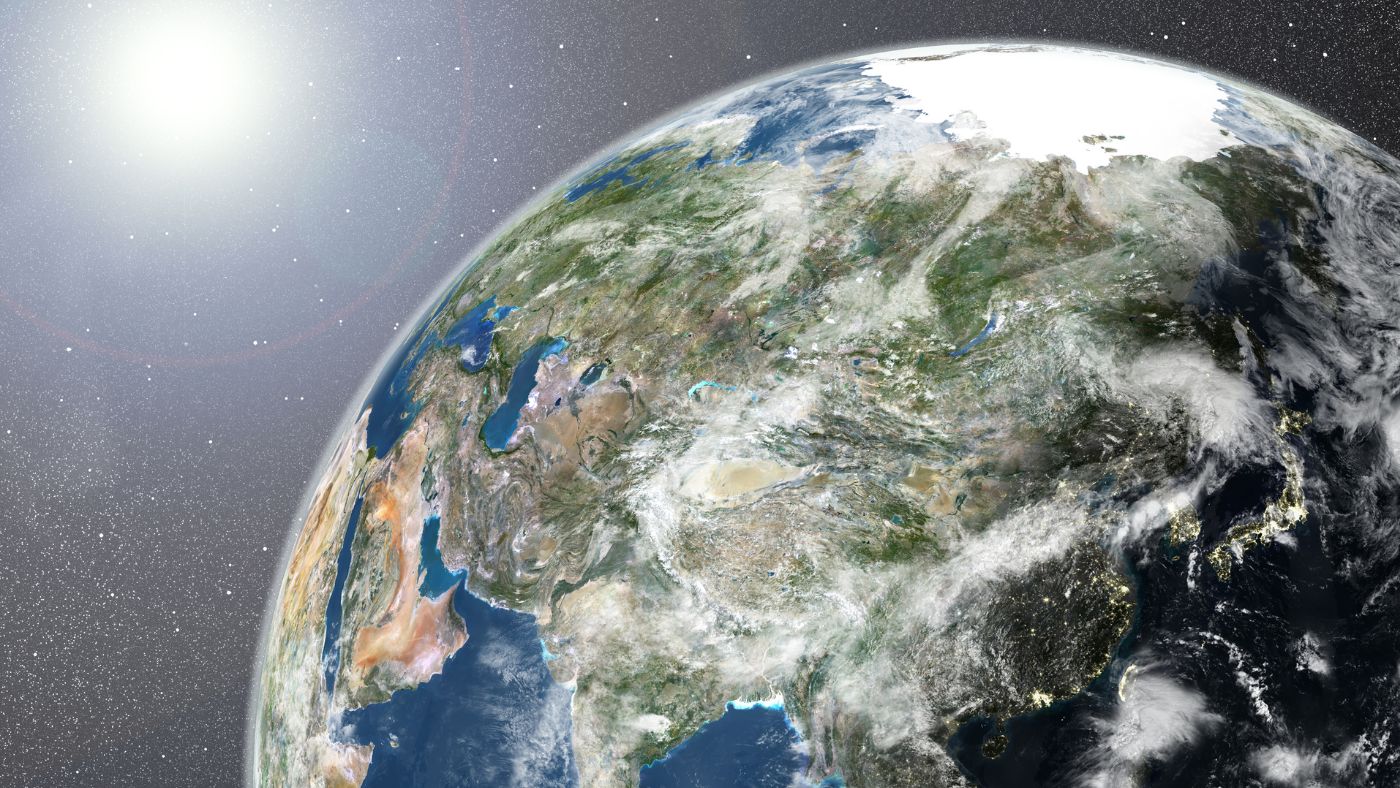How can we get electricity from space?
Solar power harvested by satellites and beamed to Earth is no longer ‘just science fiction’, say scientists

The UK government has given the go-ahead for a £4.3 million project to harness the Sun’s rays via a “Bond-style” floating solar power station that could supply up to a quarter of the country’s electricity.
Grant Shapps this week announced a multimillion-pound package of support for a project being led by two universities. Cambridge University will develop ultra-lightweight solar panels that can survive the harsh environment of space, while Queen Mary, University of London will research the wireless transmission technology that would send the energy back to Earth.
The energy company EDF, meanwhile, will investigate how to get the power into the UK’s National Grid.
The Week
Escape your echo chamber. Get the facts behind the news, plus analysis from multiple perspectives.

Sign up for The Week's Free Newsletters
From our morning news briefing to a weekly Good News Newsletter, get the best of The Week delivered directly to your inbox.
From our morning news briefing to a weekly Good News Newsletter, get the best of The Week delivered directly to your inbox.
“It does sound like something out of a Bond movie,” Shapps, the energy security and net zero secretary, said in an interview with The Telegraph. “But solar panels in space have the advantage of getting 24 hours of sunlight, which we can’t do on Earth, so it’s definitely worth investing in.
“People thought it was impossible to land a man on the Moon, or impossible to split that atom. You follow the science and the impossible becomes possible.”
‘A near-limitless supply of power’
Earlier this week a prototype built by the California Institute of Technology (Caltech) demonstrated that beaming power wirelessly from space towards Earth is possible.
A small but detectable amount of power was transmitted by a device known as the Microwave Array for Power-transfer Low-orbit Experiment (Maple), which Space.com explained is “an array of flexible and lightweight microwave power transmitters”.
A free daily email with the biggest news stories of the day – and the best features from TheWeek.com
According to the space news website, the experiment proved “the viability of tapping into a near-limitless supply of power in the form of energy from the sun from space”.
Retrieving energy from space has numerous advantages, the site said. “Because solar energy in space isn’t subject to factors like day and night, obscuration by clouds, or weather on Earth, it is always available.” Consequently, “it is estimated that space-based harvesters could potentially yield eight times more power than solar panels at any location on the surface of the globe.”
‘Space solar power is inevitable’
Tapping into such a potentially vast and reliable power supply could not only boost Britain’s energy security, but will also reduce the need for fossil fuels and drive down household bills, Shapps said.
It is not just the UK that is interested in the technology. In late November, a top-level meeting of European science ministers will convene in Paris to discuss the next priorities for the European Space Agency (Esa). One item they will be considering is a project called Solaris, which proposes building commercial power stations in orbit.
The China Academy of Space Technology has announced plans for a similar system by 2028 and military labs in the US are reportedly experimenting with technology that could send power to remote bases or combat zones.
Generating power in space is not a new idea, said The Guardian. In fact it has been investigated every few decades since the beginning of the space race and “on every occasion, the story has been the same: the cost of launching such large satellites is prohibitive. But now, things are different.”
Reusable rockets are making the cost of sending equipment into orbit significantly cheaper, the newspaper said, citing John Mankins, a former Nasa physicist who is now president of Artemis Innovation Management Solutions.
Instead of costing about $1,000 to launch every kilogram into space, Mankins told The Guardian he expects prices soon to reach closer to $300 a kilogram. “That’s the holy grail for space solar power. It is not just possible someday – it’s inevitable in the next five or seven years,” he said.
“People are realising this isn’t just science fiction,” Ali Hajimiri, an electrical engineer at Caltech and one of the Maple project’s leaders, told The Wall Street Journal. “There may be a pathway to make this reality.”
‘An existential need’
Obstacles remain. One Solaris-funded report by the research firm Roland Berger noted that bringing space-based solar power to Earth will require not just a lot of satellites but plenty of antenna farms on the ground. Two gigawatts of beamed power would require about 25 square miles of receiver, the firm suggested.
Other potential dangers include everything from “impacts on health to sabotage”, the WSJ said. “And then there is the question of how much customers will have to pay for their space-based solar electricity.”
In its report, Roland Berger concluded that power from space could be “a cost-competitive renewable technology”, but that it still depends on how much it costs to send equipment into space and the cost of electronics generally.
Still, for Sergio Pellegrino, who also worked on Caltech’s project, the opportunities are clear. “There is an existential need for abundant clean power,” he said, “and this could help get us there.”
Arion McNicoll is a freelance writer at The Week Digital and was previously the UK website’s editor. He has also held senior editorial roles at CNN, The Times and The Sunday Times. Along with his writing work, he co-hosts “Today in History with The Retrospectors”, Rethink Audio’s flagship daily podcast, and is a regular panellist (and occasional stand-in host) on “The Week Unwrapped”. He is also a judge for The Publisher Podcast Awards.
-
 Crest falling: Mount Rainier and 4 other mountains are losing height
Crest falling: Mount Rainier and 4 other mountains are losing heightUnder the radar Its peak elevation is approximately 20 feet lower than it once was
-
 Death toll from Southeast Asia storms tops 1,000
Death toll from Southeast Asia storms tops 1,000speed read Catastrophic floods and landslides have struck Sri Lanka, Indonesia, Thailand and Malaysia
-
 Can for-profit geoengineering put a pause on climate change?
Can for-profit geoengineering put a pause on climate change?In the Spotlight Stardust Solutions wants to dim the sun. Scientists are worried.
-
 How will climate change affect the UK?
How will climate change affect the UK?The Explainer Met Office projections show the UK getting substantially warmer and wetter – with more extreme weather events
-
 Can the UK do more on climate change?
Can the UK do more on climate change?Today's Big Question Labour has shown leadership in the face of fraying international consensus, but must show the public their green mission is ‘a net benefit, not a net cost’
-
 Did Cop30 fulfil its promise to Indigenous Brazilians?
Did Cop30 fulfil its promise to Indigenous Brazilians?Today’s Big Question Brazilian president approves 10 new protected territories, following ‘unprecedented’ Indigenous presence at conference, both as delegates and protesters
-
 Can the world adapt to climate change?
Can the world adapt to climate change?Today's Big Question As the world gets hotter, COP30 leaders consider resilience efforts
-
 Taps could run dry in drought-stricken Tehran
Taps could run dry in drought-stricken TehranUnder the Radar President warns that unless rationing eases water crisis, citizens may have to evacuate the capital


